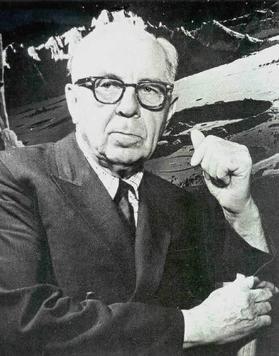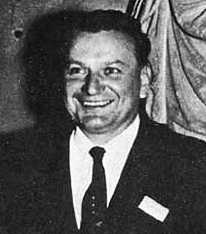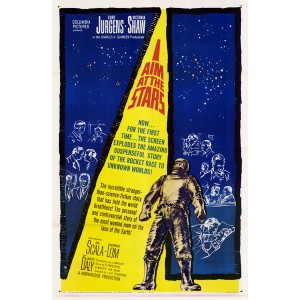Related Research Articles

Wernher Magnus Maximilian Freiherr von Braun was a German and American aerospace engineer and space architect. He was also a member of the Nazi Party and Allgemeine SS, as well as the leading figure in the development of rocket technology in Nazi Germany and later a pioneer of rocket and space technology in the United States.

Chesley Knight Bonestell Jr. was an American painter, designer, and illustrator. His paintings inspired the American space program, and they have been influential in science fiction art and illustration. A pioneering creator of astronomical art, along with the French astronomer-artist Lucien Rudaux, Bonestell has been dubbed the "Father of Modern Space art".

Greifswalder Oie is a small island in the Baltic Sea, located east of Rügen on the German coast. The island covers an area of about 54 hectares. The isle forms part of the municipality of Kröslin.

Willy Otto Oskar Ley was a German and American science writer and proponent of cryptozoology. The crater Ley on the far side of the Moon is named in his honor.

The U.S. Space & Rocket Center in Huntsville, Alabama is a museum operated by the government of Alabama, showcasing rockets, achievements, and artifacts of the U.S. space program. Sometimes billed as "Earth's largest space museum", astronaut Owen Garriott described the place as, "a great way to learn about space in a town that has embraced the space program from the very beginning."
"Man Will Conquer Space Soon!" was the title of a series of 1950s magazine articles in Collier's detailing Wernher von Braun's plans for human spaceflight. Edited by Cornelius Ryan, the individual articles were authored by such space notables of the time as Willy Ley, Fred Lawrence Whipple, Dr. Joseph Kaplan, Dr. Heinz Haber, and von Braun. The articles were illustrated with paintings and drawings by Chesley Bonestell, Fred Freeman, and Rolf Klep, some of the finest magazine illustrators of the time.
"Man in Space" is an episode of the American television series Disneyland which originally aired on March 9, 1955. It was directed by Disney animator Ward Kimball. This Disneyland episode, was narrated partly by Kimball and also by such scientists Willy Ley, Heinz Haber, and Wernher von Braun; as well as Dick Tufeld of Lost in Space fame.
"Man and the Moon" is an episode of Disneyland, which originally aired on December 28, 1955. It was directed by Disney animator Ward Kimball.

Krafft Arnold Ehricke was a German rocket-propulsion engineer and advocate for space colonization. Ehricke is a co-designer of the first Centaur liquid oxygen/liquid hydrogen upper stage.

John Cornelius Houbolt was an aerospace engineer credited with leading the team behind the lunar orbit rendezvous (LOR) mission mode, a concept that was used to successfully land humans on the Moon and return them to Earth. This flight path was chosen for the Apollo program in July 1962. The critical decision to use LOR was viewed as vital to ensuring that man reached the Moon by the end of the decade as proposed by President John F. Kennedy. In the process, LOR saved time and billions of dollars by efficiently using the rocket and spacecraft technologies.

Ernst Stuhlinger was a German-American atomic, electrical, and rocket scientist. After being brought to the United States as part of Operation Paperclip, he developed guidance systems with Wernher von Braun's team for the US Army, and later was a scientist with NASA. He was also instrumental in the development of the ion engine for long-endurance space flight, and a wide variety of scientific experiments.

You Will Go To The Moon is a work of children's literature written by Mae and Ira Freeman and illustrated by Robert Patterson, published in 1959, ten years before the first crewed Moon landing. The first edition was reprinted in England in 1962 under the same title. A second edition was published in 1971, with new illustrations reflecting NASA's Project Apollo. This was reprinted in England in 1973 under the title Going to the Moon.

Magnus "Mac" Freiherr von Braun was a German chemical engineer, Luftwaffe aviator, rocket scientist and business executive. In his 20s he worked as a rocket scientist at Peenemünde and the Mittelwerk.

The Neutral Buoyancy Simulator was a neutral buoyancy pool located at NASA's George C. Marshall Space Flight Center (MSFC). Engineers and astronauts developed hardware and practiced procedures in this tank from its completion in 1968 through its decommissioning in 1997. Marshall recognized the need for underwater simulations of extra-vehicular activities (EVAs) and developed three successively larger tanks for the purpose. The Neutral Buoyancy Simulator contributed significantly to the American crewed space program. Skylab, the Space Shuttle, Hubble Space Telescope, and the International Space Station have all benefited from the Neutral Buoyancy Simulator. Until Johnson Space Center constructed the Weightless Environment Test Facility in the mid-1970s, MSFC had the only NASA-owned test facility that allowed engineers and astronauts to become familiar with the dynamics of body motion under weightless conditions.

I Aim at the Stars is a 1960 biographical film which tells the story of the life of Wernher von Braun. The film covers his life from his early days in Germany, through Peenemünde, until his work with the U.S. Army, NASA, and the American space program.

The Mars Project is a 1952 non-fiction scientific book by the German rocket physicist, astronautics engineer and space architect, Wernher von Braun. It was translated from the original German by Henry J. White and first published in English by the University of Illinois Press in 1953.

The National Aeronautics and Space Administration (NASA) was created in 1958 from the National Advisory Committee for Aeronautics (NACA), and other related organizations, as the result of the Space Race between the United States and the Soviet Union in the 1950s.
Michael J. Neufeld is a historian and author. He chaired the Space History Division at the Smithsonian’s National Air and Space Museum from 2007 to 2011, and continues to be a curator there.

A single-person spacecraft is a vehicle designed for space travel. The concept has been used in science fiction and actual ships such as the Mercury capsule, Vostok and some suborbital designs. Single-person spacecraft have been envisioned as a supplement or replacement for space suits in certain applications. The Von Braun Bottle suit of the 1950s functions as a hybrid of a space suit and a one-person spacecraft.

Project Mars: A Technical Tale is a 2006 science fiction novel by German-American rocket physicist, Wernher von Braun (1912–1977), credited as Dr. Wernher von Braun. It was written by von Braun in German in 1949 and entitled Marsprojekt. Henry J. White (1892–1962) translated the book into English and it was published later by Apogee Books (Canada) in 2006 as Project Mars: A Technical Tale, almost thirty years after von Braun's death. The original German text remains unpublished.